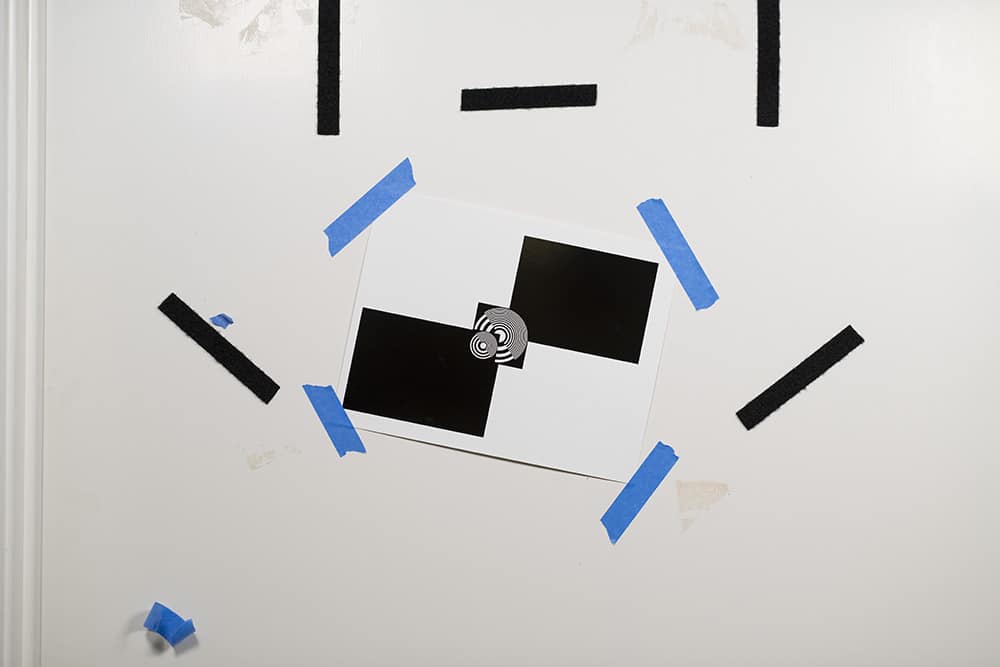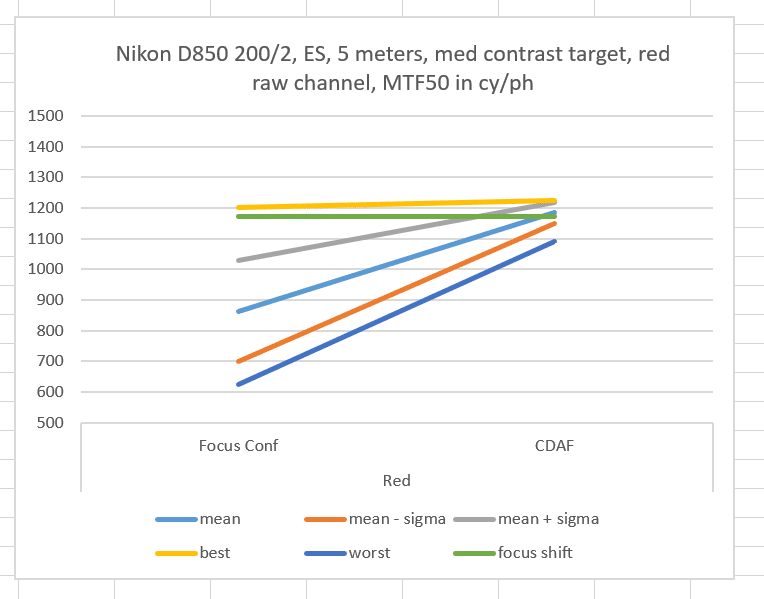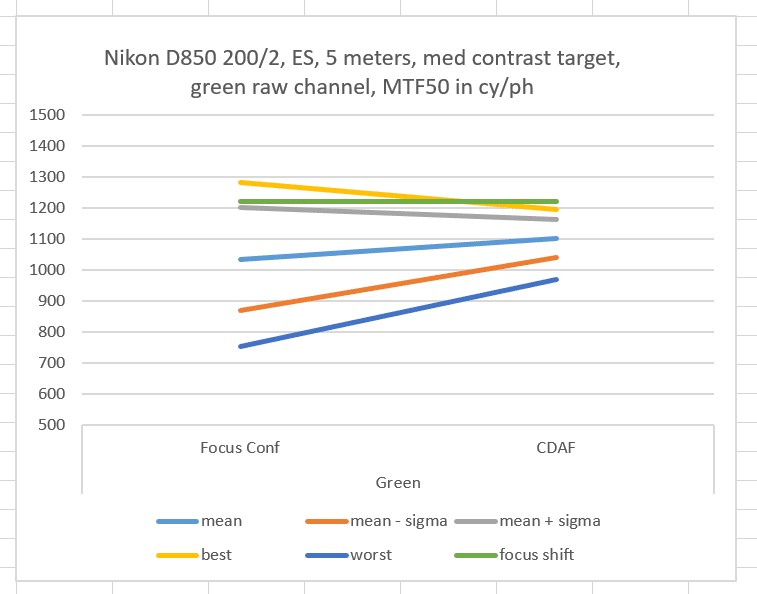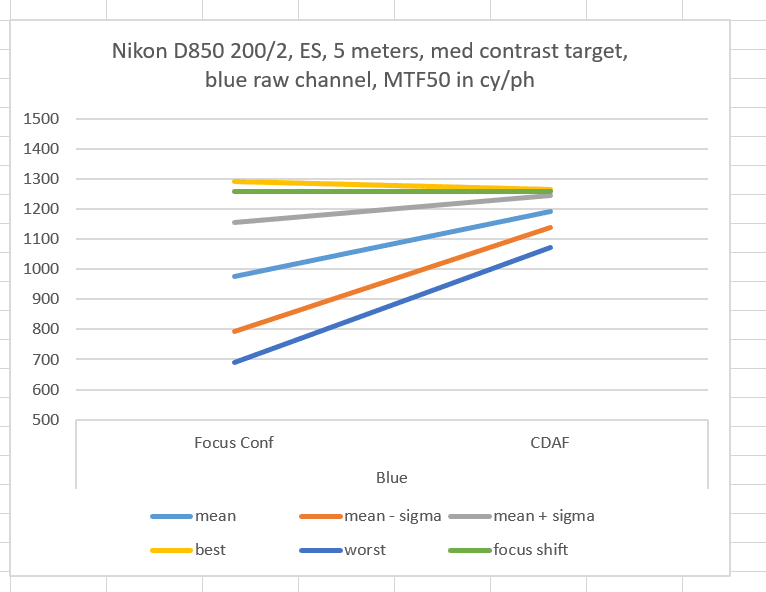This is the 24th post in a series of Nikon D850 tests. The series starts here.
The D850 has what is touted to be improved accuracy of its focus information indicator. That’s the group of three symbols, two arrows and a meatball, at the bottom left of the optical viewfinder (OVF). If you have a Nikon lens, if one of the arrows is lit up, you turn the top of the focusing ring in the direction that the arrow is pointing, until both arrows go out and all you see is the dot/circle/meatball. The focus confirmation indicator uses the same phase detection mechanism used by the phase-detection autofocus (PDAF) system.
I set up the camera as in the previous post, put a Nikon 200 mm f/2 VR I lens on it and aimed it at this target:
I made a series of 32 exposures using the live view contrast detection autofocus system, triggering the camera with a Nikon intervalometer.
Then I put the camera in OVF mode, focused until I got a meatball, switched to liveview, waited a few seconds, tripped the shutter with the Nikon remote release, switched back to OVF, checked for the presence of the meatball, and repeated.
I unpacked all the images (but didn’t demosaic them) using dcraw in document mode. Then, using MTF Mapper and Matlab, I measured the MTF50 in cycles per picture height, of a horizontal edge to the right of the zone plate in the target.
Here’s what I got, for the red raw channel:
I’ve plotted the results from the use of focus confirmation on the left, and the ones from using CDAF on the right. The green line is the best sharpness found in the test in the preceding post, which used a combination of manual focusing and the D850’s Focus Shift Shooting feature. The light blue line is the average, or mean, of all the captures. The dark blue line is the worst, and the yellow line is the best. You can see that in both the CDAF and focus confirmation cases, that the too-large step size of the Focus Shift Shooting feature caused it to miss focusing distances that the other two approaches found.
The gray line is the average plus the standard deviation (aka sigma) and the red one is the average minus the standard deviation. If the data were Gaussian, about two thirds of the values would lie between those two lines.
Here are the results for the other two channels:
Since the Nikon 200 mm f/2 has such low longitudinal chromatic aberration (LoCA), the three sets of curves aren’t much different from one another.
You can see that the CDAF and the Focus Shift Shooting both provide more accurate and more consistent ways of focusing than focus confirmation.




[…] while back I wrote this post about the accuracy of manual focusing with the D850 using the “focus confirmation” […]